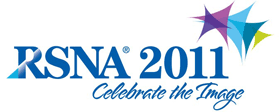
Abstract Archives of the RSNA, 2011
LL-HSS-MO2B
The Degree of Abdominal Imaging (AI) Subspecialization of the Reviewing Radiologist Significantly Impacts the Number of Clinically-relevant and Incidental Discrepancies Identified during Peer Review of Emergency After-hours Body CT Studies
Scientific Informal (Poster) Presentations
Presented on November 28, 2011
Presented as part of LL-HSS-MO: Health Services, Policy, and Research
Megan Elizabeth Bell MD, Presenter: Nothing to Disclose
Maitray D. Patel MD, Abstract Co-Author: Nothing to Disclose
Alvin C. Silva MD, Abstract Co-Author: Research agreement, General Electric Company
Amy Kiyo Hara MD, Abstract Co-Author: License agreement, General Electric Company
Researcher, General Electric Company
Joseph Michael Collins MD, Abstract Co-Author: Nothing to Disclose
To evaluate if and to what extent the degree of subspecialization in abdominal imaging (AI) affects rates of discrepancies identified on review of body CT studies initially interpreted by board-certified radiologists not specialized in AI.
In the radiology department of one institution, all staff radiologists are subspecialized and are primary members of one section; however, radiologists with professional interests in areas outside their primary section can be secondary members of another section. AI daytime clinical rotations are staffed by section members; emergency after-hours cases are initially interpreted by an in-house on call board-certified radiologist who may not necessarily be a member of the AI section. Among 13 radiologists in the AI section, 6 are primary members of the AI section and 7 are primary members of another section. All AI section radiologists participate in review of emergency body CT scans interpreted after hours by non-section radiologists, with relevant discrepancies listed in feedback reports and included in revised interpretations. The feedback reports of all consecutive after-hours body CT scans performed between 7/1/10 and 12/31/10 that were initially interpreted by a non-section member were reviewed and placed into one of 3 categories: (1) discrepancies that have some potential to affect patient care (“clinically relevant discrepancies”, or CRD); (2) discrepancies that have very little potential to affect patient care (“incidental discrepancies”, or ID); and (3) other types of comments.
1303 studies met the inclusion criteria. Of 742 cases reviewed by primary members of the AI section, 33 (4.4%) had CRD and 78 (10.5%) had ID. Of 561 cases reviewed by secondary members of the AI section, 11 (2.0%) had CRD and 36 (6.5%) had ID. The differences between the groups for both types of discrepancies were statistically significant (p = 0.01).
Even among members of an academic AI section, the degree of AI subspecialization affects the rate of clinically relevant and incidental discrepancies identified in body CT interpretations initially rendered by board-certified but non-abdominal imaging subspecialized radiologists.
Peer review processes that rely on second-read review of body CT studies should maximize the degree of subspecialization of the reviewer to maximally identify clinically relevant discrepancies.
Bell, M,
Patel, M,
Silva, A,
Hara, A,
Collins, J,
The Degree of Abdominal Imaging (AI) Subspecialization of the Reviewing Radiologist Significantly Impacts the Number of Clinically-relevant and Incidental Discrepancies Identified during Peer Review of Emergency After-hours Body CT Studies. Radiological Society of North America 2011 Scientific Assembly and Annual Meeting, November 26 - December 2, 2011 ,Chicago IL.
http://archive.rsna.org/2011/11012234.html

